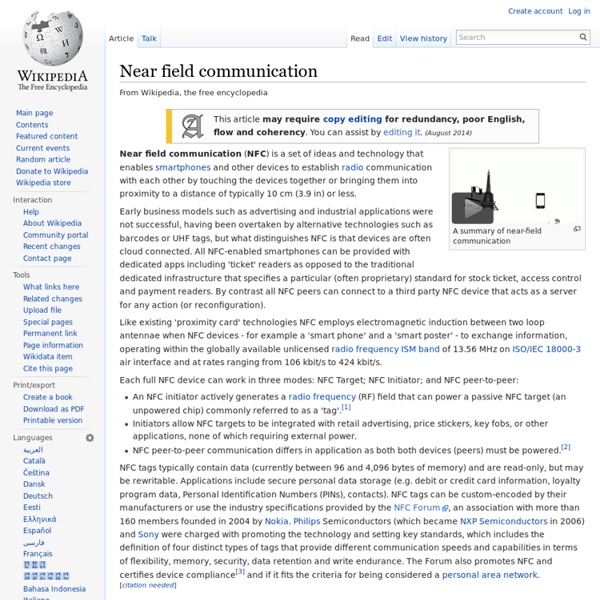Memory Improvement Techniques - Improve Your Memory with MindTools.com - StumbleUpon
© VeerPRZEMYSLAW PRZYBYLSKI Use these techniques to improve your memory. The tools in this section help you to improve your memory.
RFID Experimenters Kit
RFID is an exciting new technology that is finding its way into a variety of different industries; pet identification, keyless entry, hospitals, inventory management and tracking, tollway collections, security, data collection, wildlife tracking, and much more. Now you can experiment on your own with this great starter kit. This kit includes everything needed to get started:
Data visualisation DIY: our top tools
What data visualisation tools are out there on the web that are easy to use - and free? Here on the Datablog and Datastore we try to do as much as possible using the internet's powerful free options. That may sound a little disingenuous, in that we obviously have access to the Guardian's amazing Graphics and interactive teams for those pieces where we have a little more time - such as this map of public spending (created using Adobe Illustrator) or this Twitter riots interactive. But for our day-to-day work, we often use tools that anyone can - and create graphics that anyone else can too. So, what do we use? Google fusion tables
» 4 Simple Steps to Start the Exercise Habit
Post written by Leo Babauta. I have to admit that I have my ups and downs with the exercise habit. So I know that it’s not the easiest habit for most people, and most people’s experiences consist of starting and stopping and starting again. Which is fine — don’t beat yourself up about it. The important thing is starting again. I’ve written before about how to build the exercise habit (and even have a guest post on it), but today I thought I’d revisit the topic for those who still have trouble.
Latest Launch Brings China Closer to ‘GPS’ Of Its Own
At 5:30 on Sunday morning, the Chinese government fired a Long March 3A rocket into orbit. It carried a navigation satellite — the fifth in a planned constellation of 30 or more Beidou orbiters that Beijing hopes will soon rival America’s Global Positioning System. For years, the U.S. Air Force has owned and operated the system that the rest of the world uses to find its way home, synch its financial transactions (thanks to the GPS timing service), and bring its ships to port. That’s given America a huge military advantage; GPS enables America’s bombs to be targeted with incredible precision.
Smart Readers Are Too Distracted to Dig Smart Content
Photo: Thomas Patterson Andrew DeVigal knows how to tell a story. For six years he was the Director of Multimedia at the New York Times, developing groundbreaking interactive news packages like the Emmy award-winning A Year At War. He understands that human elements drive narrative and best engage the reader, but against a backdrop of ceaseless online feeds and notifications it is increasingly difficult for journalists to hold readers’ attention. He believes smartly produced interactive news features which balance audio, video and stills can get audiences interested in long, deep stories if executed correctly.
How to Sleep Better: Tips for Getting a Good Night’s Sleep
The secret to getting good sleep every night Well-planned strategies are essential to deep, restorative sleep you can count on, night after night. By learning to avoid common enemies of sleep and trying out a variety of healthy sleep-promoting techniques, you can discover your personal prescription to a good night’s rest. The key, or secret, is to experiment. What works for some might not work as well for others. It’s important to find the sleep strategies that work best for you.
Thought-controlled wheelchairs and bionics that 'feel'
17 February 2011Last updated at 20:33 By Neil Bowdler Science reporter, BBC News, Washington DC Watch the prototype wheelchair in action Thought-controlled wheelchairs and nerve-controlled prosthetic arms are some of the latest innovations in bionics being discussed at a science conference in Washington. The wheelchair can be directed by brain signals detected using a cap fitted to the user and is the work of scientists at the Ecole Polytechnique Federale de Lausanne in Switzerland (EPFL). It is part of efforts to control machines directly via brain signals, which could lead to new devices for the paralysed and disabled.
Finnish Internet Users are Most Avid Consumers of Online News
– November 15, 2013Posted in: Europe, News & Information News and information sites capture a large proportion of the European online audience with 8 in 10 internet users accessing one of these sites in September 2013. Across the 18 European markets measured by comScore, 338 million people visited a news or information website via a desktop or laptop during the month.



